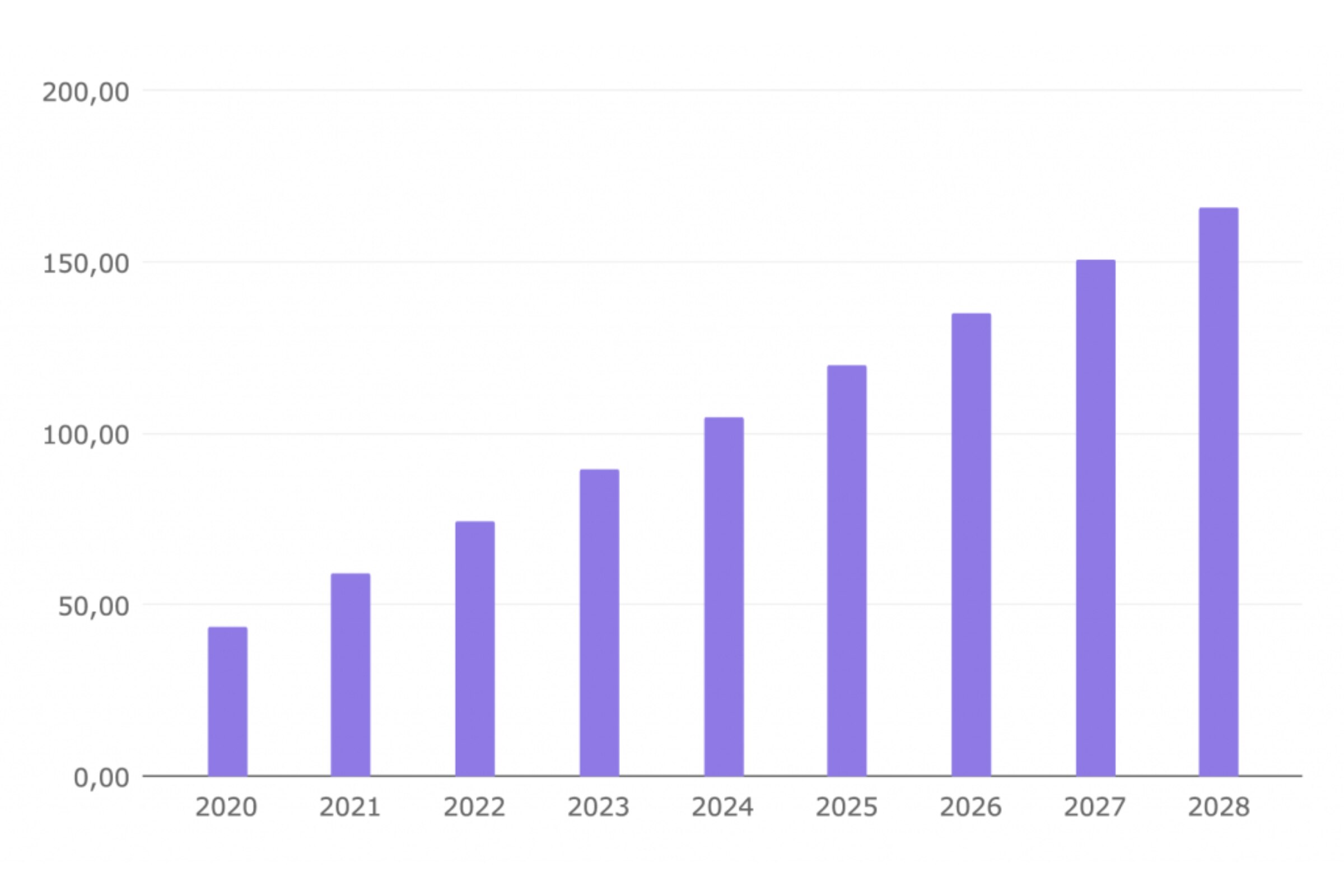20 years from now, more than 6 billion people will live in cities, primarily in Africa and Asia. This growing urban population requires solutions to make these cities organized, sustainable and equitable. Housing and transportation will be paramount.
If we were to balance the entire world's population on a scale by dividing people according to their place of residence, we'd find that currently, just over half (56%) of the Earth's 8 billion inhabitants live in urban areas, with the remainder residing in rural or small towns. However, this balance is shifting increasingly towards urbanization with each passing day.
It is projected that in 20 years, the global urban population will increase by 1.5 times, reaching 6 billion people. By 2050, seven out of every 10 individuals are expected to be city-dwellers. Such intense urbanization will exert tremendous pressure, which compels us to start designing the cities of the future now to ensure they are livable, equitable, and sustainable.
What will the cities of the future look like?
As we envision the cities 20 years from now, we often picture towering buildings and cutting-edge technologies. However, we cannot be sure that in the next few decades the streets will be full of flying taxis or self-driving vehicles. What we can foresee is that many of these cities will be extremely large and will expand significantly in Africa and Asia.
According to the World Population Prospects 2022 report, published by the UN, by 2050 just eight countries will account for more than half of the world’s estimated population growth: the Democratic Republic of the Congo, Egypt, Ethiopia, India, Nigeria, Pakistan, the Philippines, and Tanzania.
The World Bank contributes another interesting piece of data to help us envision the urban landscape of the future: the increase in urban land use is outpacing population growth by as much as 50%. This means that 1.2 million km² of new urban built-up area could be added to the world by 2030.
Such sprawl puts pressure on land and natural resources, and paves the way for uninclusive and unequal development. In opposition to this trend, there is a drive to establish cities that are well-planned, sustainable, and equitable.
50 years growing at your side
Our team of high-net-worth experts offers its extensive experience in advising and designing sophisticated strategies tailored to your needs and values.
The challenges of urban growth
The difficulties facing cities can be divided into two broad types: social and environmental. Firstly, cities must be organized to ensure access to good infrastructure and services for the entire population. Secondly, they must achieve this while minimizing their greenhouse gas emissions and pollution levels. Cities are currently estimated to account for two-thirds of global energy consumption and over 70% of greenhouse gas emissions.
Among the challenges identified by the World Bank for cities are the need to satisfy the rapidly growing demand for affordable housing and new infrastructure, the creation of viable and efficient transportation systems, and enhancing resilience against climate change.
Additionally, there is a need to provide basic services and employment opportunities for everyone, including the poorest, as well as offering support for displaced individuals. It is estimated that more than half of forcibly displaced people end up living in urban areas.
Other significant challenges include achieving energy efficiency, fostering inclusivity in cultural life, and leveraging data to develop smart city models that can immediately identify needs and produce corresponding solutions.
Housing and transport: pivotal in cities
Countries and regions around the world have developed plans to make their cities more sustainable by transforming both housing and vehicles. When it comes to buildings, strategies revolve around one basic concept: decarbonization.
Buildings are expected to increase their energy efficiency in the coming years, no longer depend on fossil fuels for lighting and air-conditioning, and to introduce renewable energy systems such as solar panels.
It is also important to reduce the impact of constructing buildings. As a result, the expectation is that buildings will be erected using materials with a lower carbon footprint and that construction and renovation practices will embrace the principles of the circular economy and material reuse.
The goal is for these homes to be equitable, to prevent cities from being split into affluent areas and suburbs with subpar infrastructure. As highlighted by the World Bank, buildings – encompassing not just residences but also hospitals, schools, and commercial spaces – are intimately connected to the economy, local employment, and the quality of life. They must be designed with the protection and well-being of people in mind.
It is also essential to modernize transport systems. Mobility is anticipated to increase, as are the costs of fuels (for instance, the price of a barrel of oil is predicted to double between 2005 and 2050). These two realities require more flexible and accessible transport systems that are not reliant on fossil fuels.
Looking at the policies of the European Union, for example, the cities two decades hence are expected to feature more comprehensive public transit networks, enhanced infrastructure for biking and walking that is both comfortable and pleasant, a proliferation of charging stations for electric vehicles, multimodal transit hubs, and on-demand transport services, among other advancements.
Estimated turnover for companies in the global smart city market from 2020 to 2028


